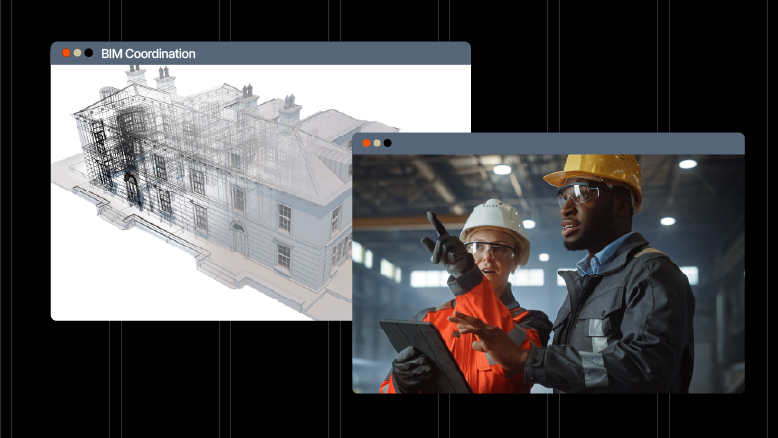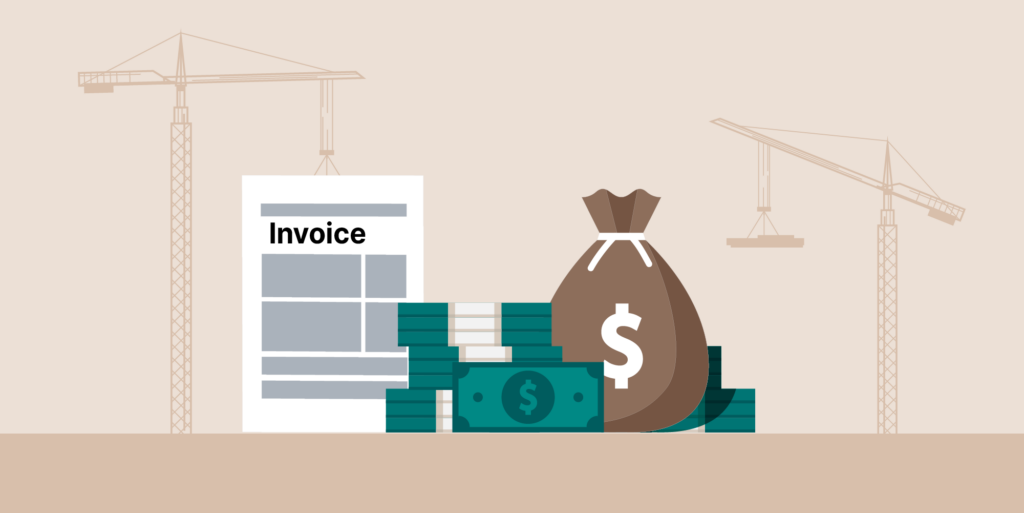— 8 min read
Design-Build vs Design-Bid-Build: Which Is Right for Your Project?
Last Updated Aug 13, 2024
Last Updated Aug 13, 2024

Construction project delivery methods dictate how project stakeholders interact throughout the construction phases. Design-build and design-bid-build are two of the most common delivery methods. While their names sound similar, they are quite different in the roles they prescribe for the owner, designer, and contractor throughout the construction project.
Choosing the best delivery method for a construction project can impact everything from the contractor's profit margin and the construction timeline to the overall quality of the finished project. A project owner must weigh expertise, risk tolerance, and project size, among other factors, to determine the best delivery method for a project.
In this article, we’ll discuss the differences between the design-build and design-bid-build construction delivery methods, their advantages and disadvantages, and how project owners can decide which will best suit their project needs.
Table of contents
Understanding the Design-Build Process
Owners who choose the design-build delivery method enter into a contract with a single firm, which takes on both the architecture and engineering (design) process and the construction of the final product.
Two key aspects of design-build are different from the traditional design-bid-build contract.
- First is the opportunity for collaboration between stakeholders throughout the project phases.
- Second, design-build can fast-track a project schedule to reduce the time it takes to complete.
Because design-build melds together the design and construction phases under a single contract, the construction team can begin work before all designs are finalized. Designers remain a part of the process throughout the project and can continue to make changes as needed.
During preconstruction, the owner will scope suitable sites and develop a rough design and budget. The owner puts out a Request for Proposal (RFP) to solicit proposals from design-build teams. Once a design-build partnership wins the bid, the design process begins, and the team can develop a clear scope, schedule, design, and final contract cost.
As soon as any stage of planning is released for construction, planning and building begins on that section. For instance, if the site requires specific preparation like drainage, that portion can begin before further designs are complete.
During this process, the design-build partnership is at the project's helm, bearing much of the responsibility for maintaining the final product's budget, schedule, and quality. Though the owner remains involved and signs off on changes to the original plan, the design-build firm assumes significant risks.
Once construction is complete, the design-build team reviews the project with the owner for final acceptance then hands the project over to the owner.
Advantages of Design-Build
Design-build has grown in popularity recently, as many owners recognize its benefits for their projects. The following are some benefits and detractors of the design-build method.
Compressed schedules
One of the most beneficial aspects of design-build delivery is its ability to compress a construction schedule. Because the design and build teams are contracted together, the contracting team doesn't have to wait for design completion to get started on building. Construction can begin on earlier project phases before the final design is complete.
This aspect can significantly reduce the time it takes to deliver a finished product, especially for large, extended-time projects.
Cost savings
The design-build method opens the door for significant collaboration between the various stakeholders on a construction project. When project owners, contractors, and designers use their combined expertise to optimize a project's design and construction, they can save money by avoiding mistakes and rework that so often cause cost overruns.
Quality of project
The design-build delivery method puts contractors and designers on the same team and can work together through project plans. When this relationship works successfully, the finished product can benefit from the expertise of each. This is a big difference between design-build and design-bid-build methods: In the latter delivery model, the contractor only works with designs once complete.
Risk transfer
Project delivery models differ greatly in where they distribute risk. In a traditional design-bid-build model, the owner bears significant risk and may lose money if, for example, an approved design has to be changed once construction has begun. The design-build model takes much of the risk off a project owner and puts it on the design-build team.
Challenges with Design-Build
The design-build contract isn't ideal for every situation — or all stakeholders. Identifying the downfalls of this method is important to help implement proper planning.
Scheduling conflicts
While a compressed schedule can benefit both owner and design-builder, it does throw a lot of balls in the air for the design-build team. The builders must manage construction while simultaneously consulting on further design. Further, a shortened schedule can impact the risk level for the design-builder, as many unknown factors are in place when the construction begins.
Cost uncertainty
Cost savings are only possible for design-builders when the team has managed an accurate bid, which can be very difficult without the benefit of a complete design.
Communication gaps
A design-build team that does not work together effectively can result in considerable difficulty for a contractor who is left with an unbuildable design and yet bears the responsibility for producing a quality finished project. The relationship between the contractor and the designer is absolutely critical to project success in the design-build model.
Understanding the Design-Bid-Build Process
Design-bid-build is the traditional, owner-driven model of project delivery. An owner using the design-bid-build delivery model first enters into a contract to design a project with architecture and engineering teams, then enters into a separate agreement with a general contractor to complete the build.
On a design-bid-build project, the owner, the architects and engineers will work together to complete the design before a contractor ever bids on the project.
Once designs are fully complete, the owner holds a bidding process to decide which general contractor will take on the rest of the process. When the owner awards the project to the contractor, the two parties draw up an agreement and the construction process begins.
Throughout construction, the general contractor owns the building process, and completes a change order for any part of the plan that won't work or needs alteration. The contractor submits the required changes along with a quote for the additional costs that will result, and the owner signs off on the changes.
When construction is complete, the contractor reviews the final project with the owner and passes the finished product to the owner.
Benefits of Design-Bid-Build
For a long time, design-bid-build was considered an industry standard. Its segmented nature can keep conflicts to a minimum and allow all teams to focus on their individual roles, but it can slow down the construction process.
Role Separation
When project teams sign on to separate contracts, they get to focus on their realm of expertise. Designers don't have contractors in their ears when they design, and contractors can focus on building without worrying about overseeing designs. Each team is responsible for and can be held accountable according to their very specific roles.
Cost Certainty
Design-bid-build allows for complete design finalization before bidding, so contractors can sometimes provide more accurate bids and cost projections.
A More Competitive Bidding Process
Design-bid opportunities are only open and available for teams that can take on an entire project. By contrast, design-bid-build opportunities are open to a wider selection of designers and contractors – that competitive building opportunity can drive down prices and introduce owners to a new selection of builders.
Owner Control
The design-bid-build delivery model allows owners to retain more control of the project. The owner can choose preferred design and construction teams separately, not having to settle for a prepackaged design-build team. Because designers and builders are kept separate and clearly defined, the project owner may benefit from increased transparency in the project process.
Challenges with Design-Bid-Build
Communication Gaps
The downside to role separation is the lack of contractor influence over designs. The contractor must submit change orders to alter plans if designs include inefficiencies or impossibilities.
Increased Costs
If change orders are required after construction has begun, there will be increased costs associated with the project, but those costs will pass to the owner.
More Risk
With increased control comes increased risk for the owner. Whereas the design-build method gives a DB team full responsibility for project delivery, the design-bid-build method contracts out specific processes, leaving the bulk of responsibility for changes and challenges to the owner.
Comparing Design-Build vs Design-Bid-Build
Design-build has become quite a popular alternative to the traditional design-bid-build construction delivery model for many project owners. But the model isn't suitable in every situation, and not all stakeholders agree it's the best way to get things done.
Owners who choose design-build must be willing to give up much of the control of the project, but also enjoy reduced risk.
Design-build can compress the schedule by a significant margin for very large and time-extensive projects. Some large infrastructure projects projected to take over two decades using the design-bid-build method were completed within just five years using design-build. Such a massive difference in length could make or break a project's feasibility.
The success of a design-build project may hinge on the level of trust and collaboration within the design-build team. Once the owner signs the contract, the design-build team is responsible for pulling it off – the designer and the contractor have to work together, compromise, and have great understanding when changes are required to make the project work.
When this partnership works, it can diminish the number of costly and time-consuming change orders and result in a better project. If it doesn't, there can be significant stress on the contractor to work with an unsuitable design or determine who is responsible for covering the cost of changes.
Regardless of the project delivery method used, clear, consistent organization and accessibility of project information and open communication can help foster understanding and overall project success.
Was this article helpful?
Thank you for your submission.
97%
3%
You voted that this article was . Was this a mistake? If so, change your vote here.
Scroll less, learn more about construction.
Subscribe to The Blueprint, Procore’s construction newsletter, to get content from industry experts delivered straight to your inbox.
By clicking this button, you agree to our Privacy Notice and Terms of Service.
Categories:
Tags:
Written by
Alex Six
10 articles
Alex Six is an Enterprise & Strategic Civil & Infrastructure Overlay Account Executive for Procore. Alex has a long background in the construction industry beginning with an internship with one of the biggest contractors in the world, and expanding across projects with teams as small as 4 people and as large as multi-billion dollar budgets with large teams and disciplines. His resume includes Caltrans highways & bridges, Metro light rail & underground, as well as airport runways and utilities.
View profileKristen Frisa
70 articles
Kristen Frisa is a contributing writer for Procore. She also contributes to a variety of industry publications as a freelance writer focused on finance and construction technology. Kristen holds a Bachelor of Arts in Philosophy and History from Western University, with a post-graduate certificate in journalism from Sheridan College. She lives in Ontario, Canada.
View profileExplore more helpful resources

How to Understand and Use Architect’s Supplemental Instructions
Architect’s supplemental instructions, also known as ASI, offer a means of making small changes to the construction contract after it’s signed. The ASI is a document issued by the architect...
Improving Project Monitoring with Construction Quantity Tracking
Once a construction project is underway, builders need to closely monitor the project’s progress and make sure it’s staying on schedule and within budget. Quantity tracking helps construction leaders manage...

Streamlining Construction Projects with Effective BIM Coordination
The old saying goes: if you fail to plan, you plan to fail. Construction professionals know this better than nearly anyone. To take a project from a vision in an owner’s...

Construction Invoice Factoring: A Quick Guide
Construction companies need to maintain consistent cash flow. Projects can take years to complete, and delays and unforeseen events may keep expenses mounting. Adding to this load are typically high upfront...